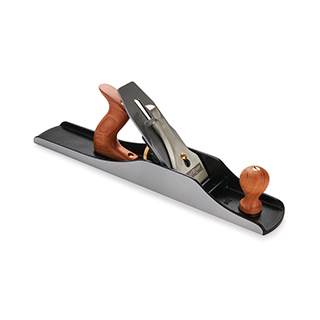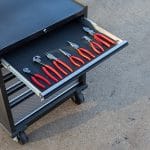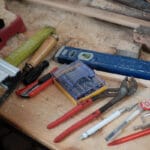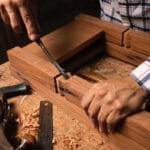Last updated: 1 May 2023
There are many schools of thought on the best way to lubricate the sole of your hand plane for decreased friction while using it. Most people will opt to use parafin wax. A small block will last for a few years. The wax is simply wiped on the sole and eases the planing somewhat. This is a tried and true method and will give good results.
The method I prefer, however, is the oil-rag can. I sort of stumbled upon this method several years ago when I was looking for an easy way to apply the perfect amount of protective oil to machine tables when performing daily cleanup on my shop machines. Paul Sellers has also popularized the method for hand tools in his videos and blogs. Now that I use hand tools almost exclusively, I’ve adopted it for my purposes, too.

Creating your own oil-rag can is a straightforward process that can save you money in the long run. There’s no need to purchase specialized oil-impregnated rags or expensive oil applicators. These are products that are designed to drain your wallet. Instead, use your resourcefulness to make a DIY oil-rag can.
Start by keeping an old soup or tomato sauce can the next time you use one in the kitchen. Rinse it out and peel off the label. Then get an old t-shirt that you no longer want. Cut off the sleeves. Fold it over on itself until the width is just wider than your can is tall. Roll it up as tight as you can. Stuff it in the can. It is helpful when “stuffing” to twist it into the can in the same direction you rolled it in. You can simply screw it down into the can.
Once it’s in, cut the protruding portion off so that 1/2 – 3/4″ remains. Get two bottles of 3 in 1 oil. Slowly saturate the rag with the oil. It will probably take both bottles the first time you do it, and you may need to saturate the rag over several sessions so the oil has a chance to permeate the entire rag. After the initial saturation, it will take about a bottle per year to keep the right amount of oil in the rag (applied 4-6 times throughout the year). When you notice the rag is not putting out enough oil, you know it’s time to add some.
To use, simply wipe the sole of your hand plane on the rag. The perfect amount of oil will be deposited and you will enjoy easy planing. You should also use it on the sides of your plane for corrosion protection and on your hand plane irons, cap irons, chisels, saw plates, etc. It is a very handy way to keep your tools lubricated and safe from rust.
Many people wonder if the oil from a plane will damage the finish of their woodworking project. However, in my experience, I’ve never encountered this issue. Generally, there are several cutting operations performed on a piece between planing and finishing, such as final scraping or sanding. These steps effectively remove any oil residue from the surface, ensuring that the finishing process goes smoothly and flawlessly.
You May Also Like: What You Should Know About Grease




Leave a Reply